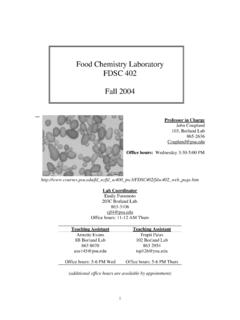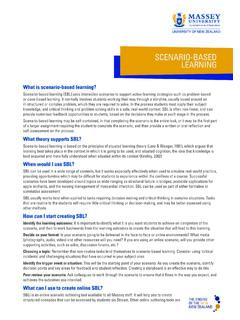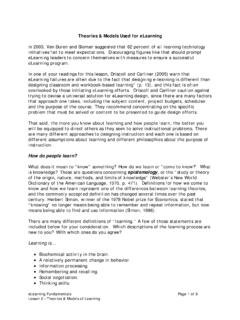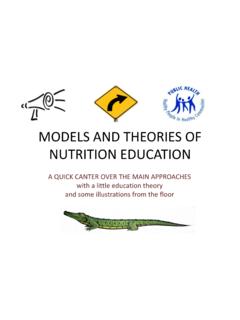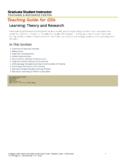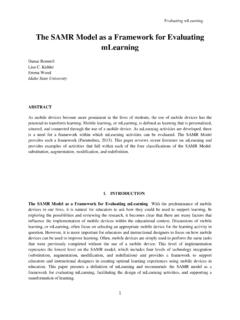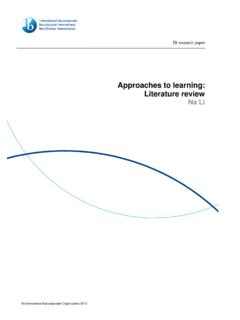Transcription of Agricultural Development Theories
1 Agricultural Development Theories Agricultural Development Theories are attempts to explain the forces in society and the economy that lead to Agricultural change. Theory Policy Action effects on people Need Improvements In: Resource Conserving Technology Substitution of Modern for Traditional Inputs Continued Development of Biological Technology and 1) more locally oriented 2) ecologically/environmentally compatible Theories of Agricultural Development The Conservation Model The Urban Impact Model (or location model). The Diffusion Model The High-Payoff Input Model Key Characteristics of Conservation Techniques 1. Input produced by agriculture itself 2.
2 There is a limit on results Urban Impact Model -- Hypotheses 1. Economic Development occurs in a specific locational matrix. 2. These locational matrices (growth centers) are primarily industrial-urban. 3. The existing economic organization works best at or near the center of a particular matrix of economic Development , and it also works best in those parts of agriculture which are situated favorably in relation to such a center; and it works less satisfactorily in those parts of agriculture which are situated at the periphery of such a matrix. Urban Impact Model Key concepts: 1. Agriculture must change input combinations 2. Agriculture must respond to demand changes The Ag.
3 Growth Process Adopting new inputs; technique Gaining new information in inputs learning about market demands Works Better Near Urban Areas Economic information more complete Less uncertainty Schultz Thesis 1. The peasant is a highly rational and economic being 2. The peasant efficiently allocates available resources GIVEN: context in which peasants live and produce resources, objectives, knowledge High Pay-Offs Inputs Enhance current resources Come from outside the Agricultural sector Accompanied by education In form peasants can use At price peasants can afford Policies Implied by the High Pay-off Input Model 1. INVEST IN RESEARCH TO PRODUCE NEW TECHNOLOGY.
4 BUT, technology based on local conditions. 2. INVEST IN CAPACITY OF LOCAL INDUSTRY. to develop, produce and supply the new inputs. 3. INVEST IN CAPACITY OF FARMERS to be able to use the modern inputs -- general basic education -- adult education -- extension system
